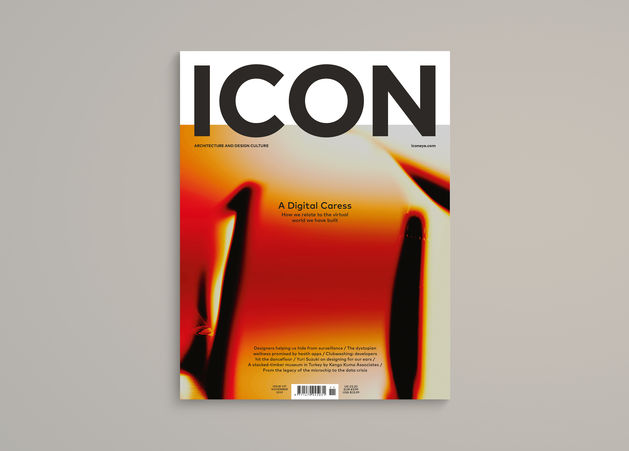
November’s issue explores the links between the digital world and design, from connections made with our data to the designers taking on a surveillance society
A digital caress: this issue is about our connection to the virtual world. We look at the legacy of the microchip and the crisis in how our data is being used, while Sophie Haigney considers designers helping us hide from surveillance. Natalie Kane explores the dystopian wellness promised by health apps and editor Priya Khanchandani talks to Yuri Suzuki about designing for our ears. Plus: the new OMM by Kengo Kuma and Associates in Turkey, a football stadium full of trees in Austria, and a look at the reasons why data should be considered architecture.
A word from Priya Khanchandani, editor of Icon:
![]()
We have known for a long time that technology is changing the world, but it wasn’t until recently that we became aware of the degree to which it is sucking information from us and spitting it out in questionable places.
Seemingly innocuous data can have surprising effects when it’s sold by tech giants. Snaps of palm trees in Costa del Sol that are put on Facebook can end up fuelling interests that are shaking the foundations of liberal democracy across the world.
From innocent holiday pictures to the growth of the far right’s political stronghold might sound like a radical leap, but it isn’t. What we put on social media is sold to agencies who derive from it our likely political stance and tailor advertising to us on behalf of political parties.
![]()
Those ads aren’t quite like the party political broadcasts we’ve all watched on terrestrial TV. An ad that Leave EU placed on the newsfeeds of thousands of voters in the run-up to the Brexit referendum, for instance, read ‘immigration without assimilation equals invasion’. It depicted a crowd of people moving along beside armed guards, like convicts.
At the time of the referendum, most of us didn’t know what Cambridge Analytica was, but it has since become a household name. We learnt that that it had profiled people using social media data gained via Facebook in order to understand their fears and political allegiances, which helped groups seeking to target them with often inflammatory and bigoted messages.
![]()
In this issue, designer Sarah T Gold argues that architects and engineers should think about data as material, and give us greater agency over the permissions we grant in everyday life. ‘Just as some buildings have information displays that indicate energy performance,’ she writes, ‘a building might show how it collects and uses data.’
In response to the prevalence of surveillance technology, we look at the work of designers finding ways around it; through innovations with camouflage, jewellery that helps avoid facial detection, and speculative fashion that renders the wearer’s identity undetectable by drones. We also challenge the effectiveness of apps that claim to improve our wellbeing, by asking whether they are actually creating an unattainable myth that we can work all hours plugged into technology, and then click an app for instant health.
Technology may have made it possible to find the answers to an infinite number of bizarre and obscure questions, but it’s time to admit we don’t know how to catch up with the sinister realities of the digital world we have built.
![]()
Subscribe to Icon magazine to be the first to get the new issue! Follow us on Twitter, Facebook and Instagram
















